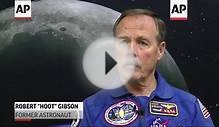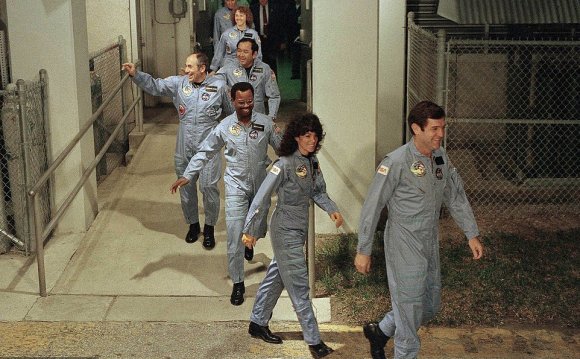
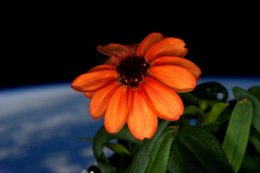 The first zinnias are blooming in space, but they almost didn’t make it from bud to flower. This is a story of how an experiment was saved by throwing out heavily regulated, detailed procedures in favor of using human judgement on the fly.
The first zinnias are blooming in space, but they almost didn’t make it from bud to flower. This is a story of how an experiment was saved by throwing out heavily regulated, detailed procedures in favor of using human judgement on the fly.
Correction: This wasn’t the first flower to bloom in space, but it’s still gorgeous.
Two weeks after planting zinnias, astronaut Kjell Lindgren spotted water oozing out of the plant pillow wicks. He poked around and found that three of the plants were drowning in water.
Ten days later, scientists looking at photos were horrified to see water droplets along some leaf edges, while other leaves were starting to dramatically bend and curl. The water droplets were a sign of high humidity, causing excess water to be forced out of leaf tips. The curling leaves were a symptom of flooded roots. Together, they were a sign of too much water and not enough air flow.
Astronauts didn’t have time to fix the problem. They had an emergency spacewalk and couldn’t spend quality time with their plants, so they bumped the fan to high and hoped it would be good enough.
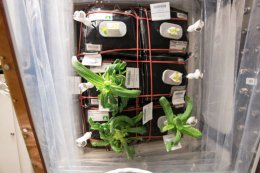 But the plants couldn’t wait. Tissue was starting to die. Then they started to mold. Mold isn’t just a problem for the Veggie garden. In the limited air circulation of the space station, it’s also a potential health hazard for the crew. At the first sign of mold, NASA made a 4am phone call to the Veggie project lead investigator to fix this right now.
But the plants couldn’t wait. Tissue was starting to die. Then they started to mold. Mold isn’t just a problem for the Veggie garden. In the limited air circulation of the space station, it’s also a potential health hazard for the crew. At the first sign of mold, NASA made a 4am phone call to the Veggie project lead investigator to fix this right now.
Veggie head scientist Trent Smith was hauled out of bed early on December 22, 2015, and quickly assembled his team. Within four hours, they’d drafted new procedures for astronaut/emergency-gardener Scott Kelly. Equipped with a dust mask just in case, Kelly cut out the moldy tissue and bagged it up for the freezer for later study on Earth. He sanitized all accessible surfaces with cleaning wipes.
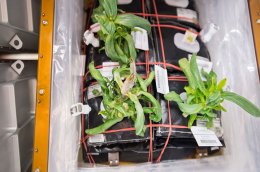 On Christmas Eve, Kelly reported new problems with his garden. Having the fan constantly on high to inhibit mold was drying the crops out too much, but the next scheduled watering wasn’t until the 27th.
On Christmas Eve, Kelly reported new problems with his garden. Having the fan constantly on high to inhibit mold was drying the crops out too much, but the next scheduled watering wasn’t until the 27th.
At this point, Kelly very politely lost his temper. “I think that would be too late, ” he argued with the ground staff. “You know, I think if we’re going to Mars, and we were growing stuff, we would be responsible for deciding when the stuff needed water. Kind of like in my backyard, I look at it and say ‘Oh, maybe I should water the grass today.’ I think this is how this should be handled.”
Instead of being annoyed at having his project taken over, Smith was ecstatic. He had a volunteer-astronaut willing to care for his plants personally instead of blindly following a pre-set chore list? Best Science Christmas Ever!
The Veggie team scrapped their book of detailed procedures, and created a streamlined “The Zinnia Care Guide for the On-Orbit Gardener.” Instead of set schedules and procedures, it was a concise set of basic guidelines to help astronaut-gardeners use their human judgment.
Kelly’s independent holiday gardening paid off. Two plants died, joining the moldy leaves in the freezer for later study. But the remaining two plants thrived, not just surviving but growing new offshoots of buds.
On January 12th, petals first started to peek out of the bud. Far earlier than the expected 7-10 days later, the world received the first photo of a flower grown entirely in space on January 16th, 2016.
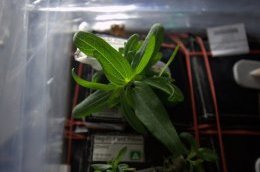

RELATED VIDEO


